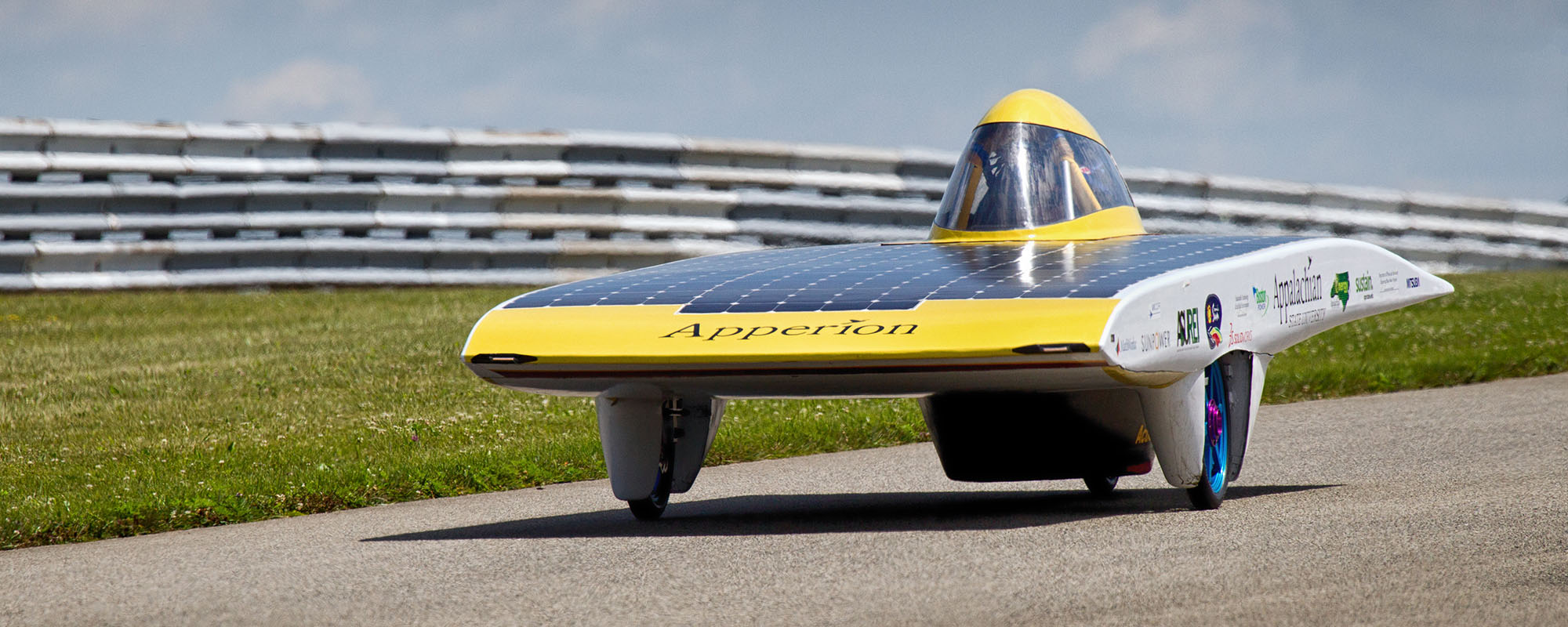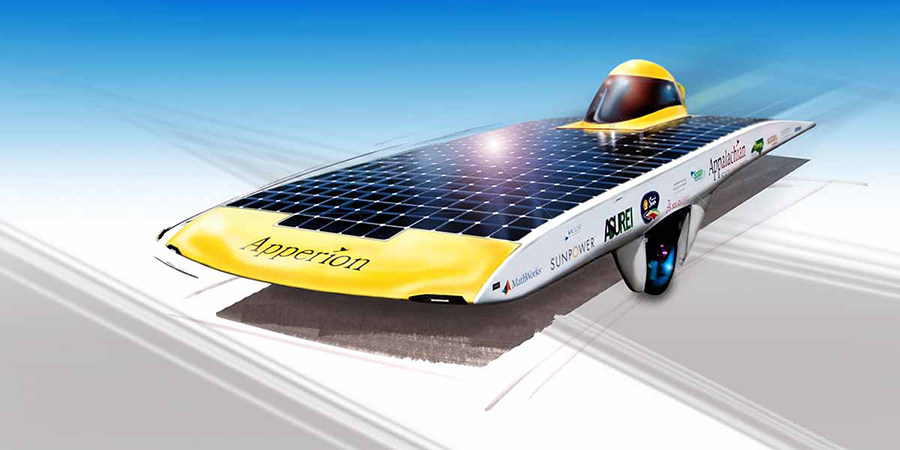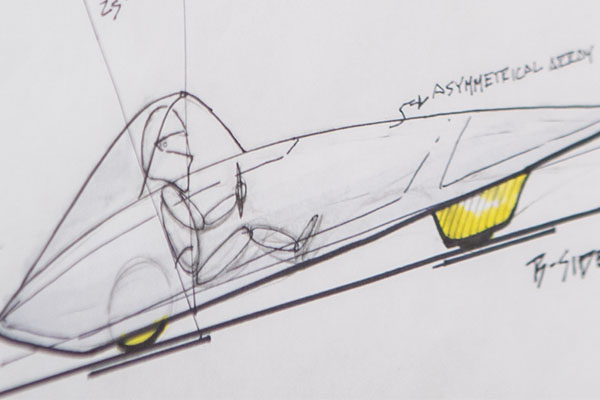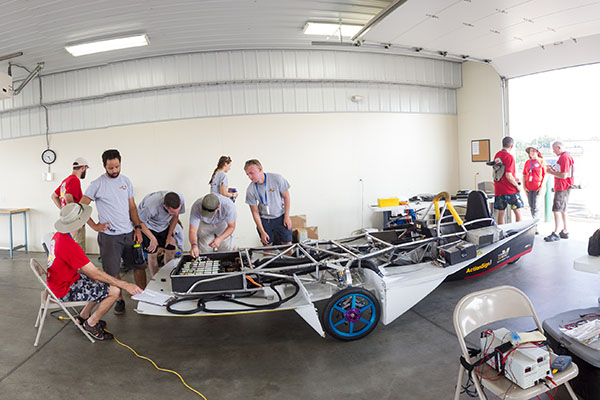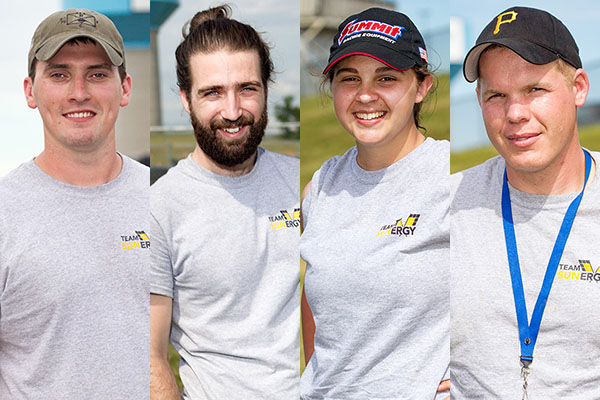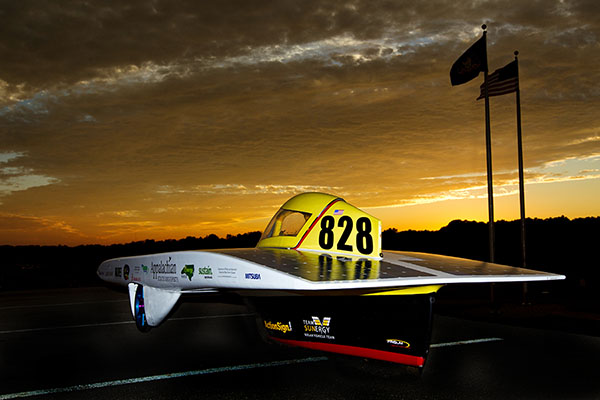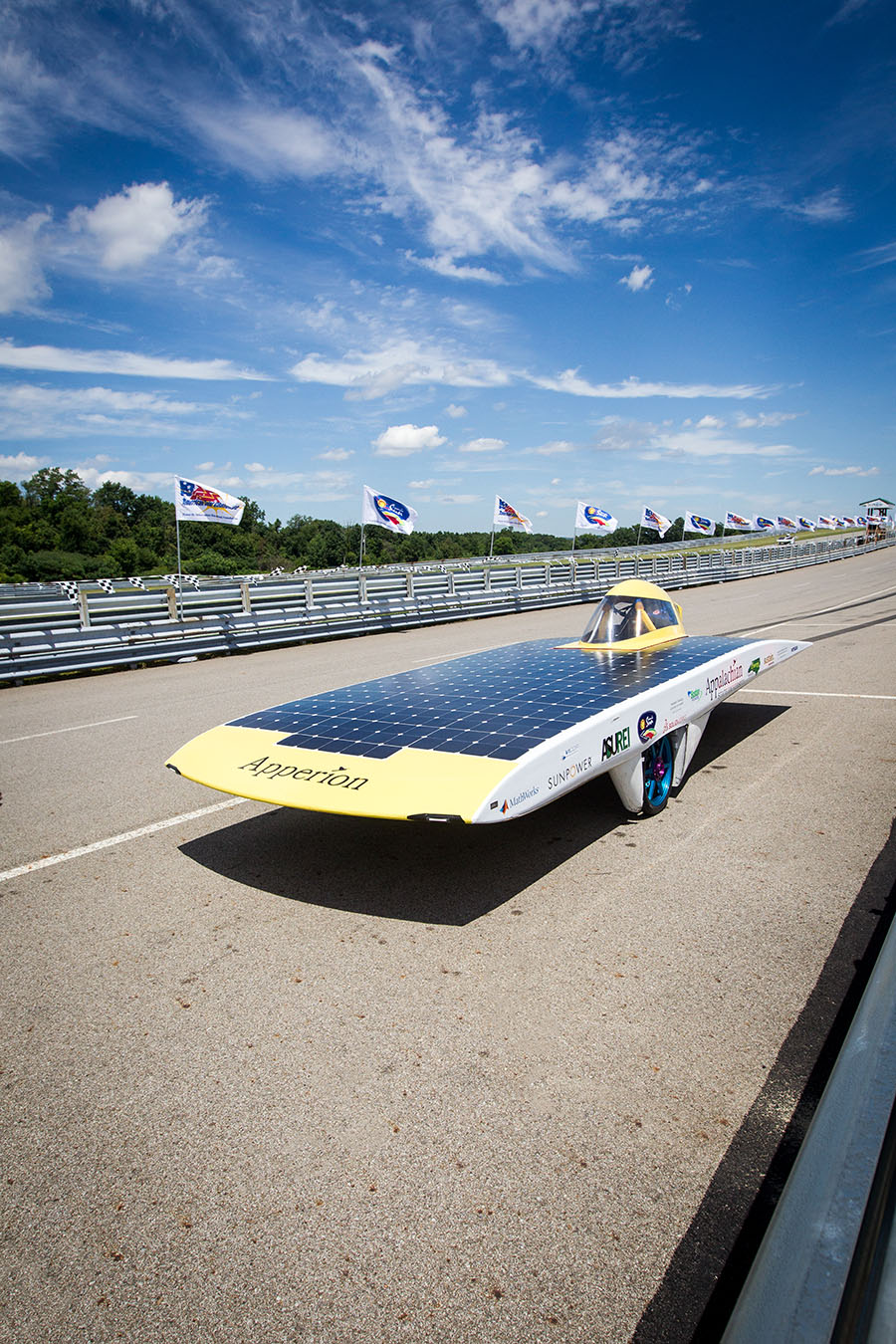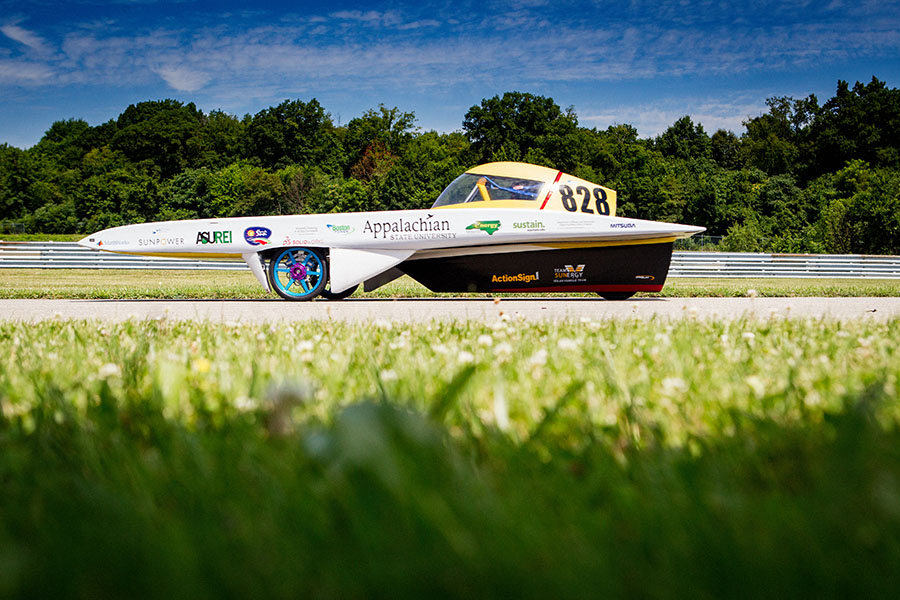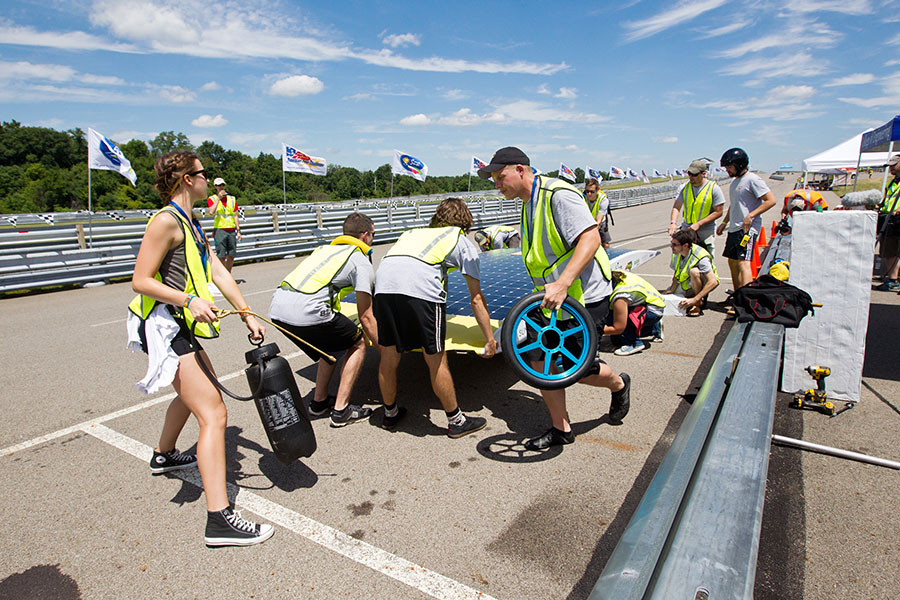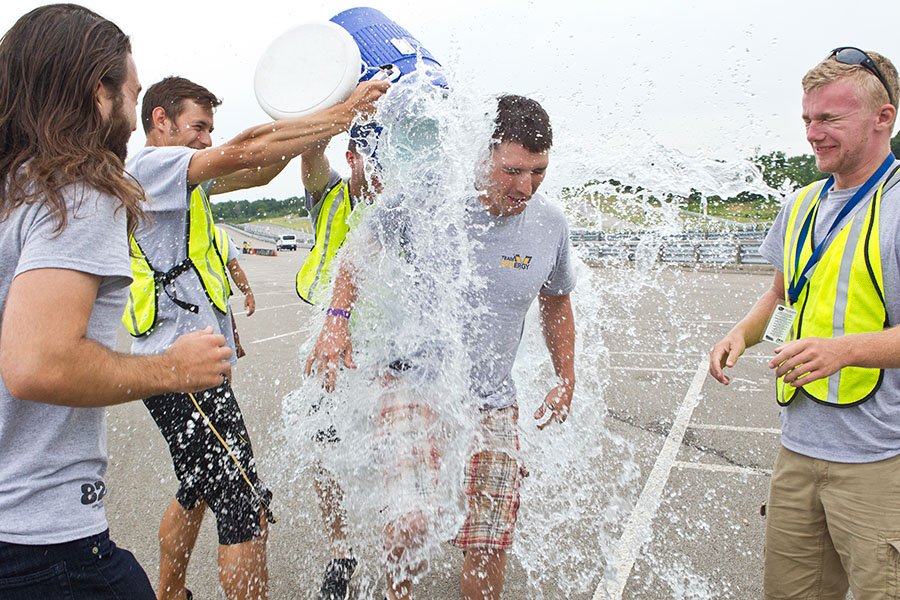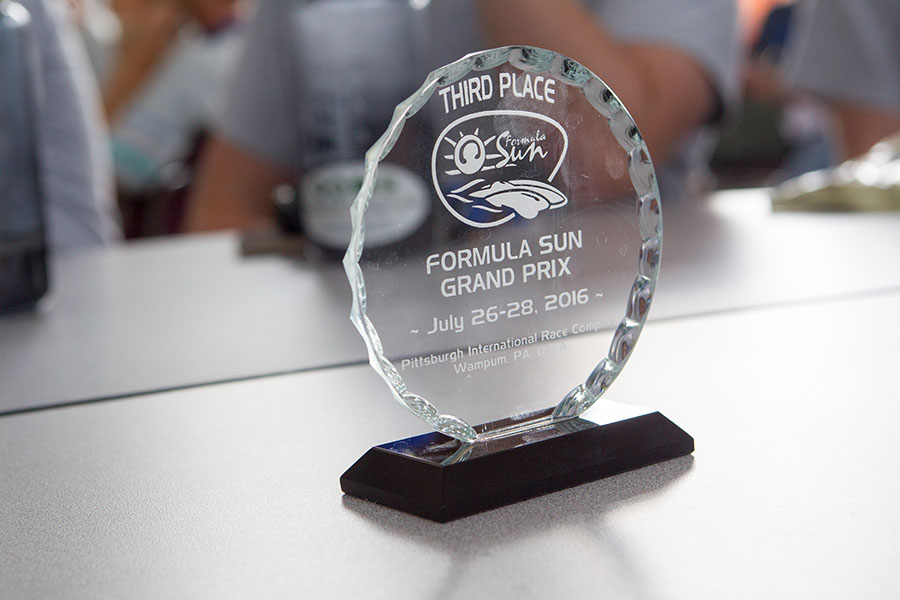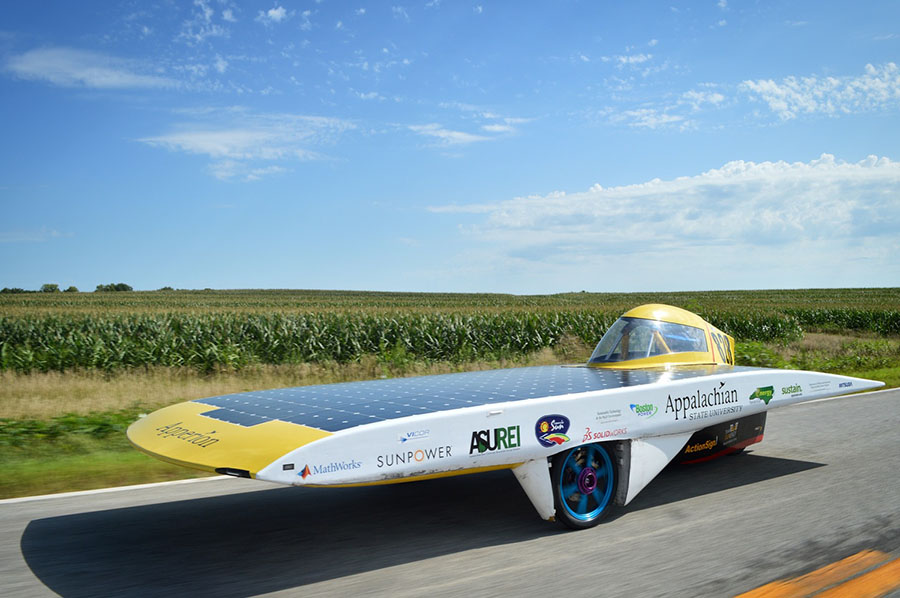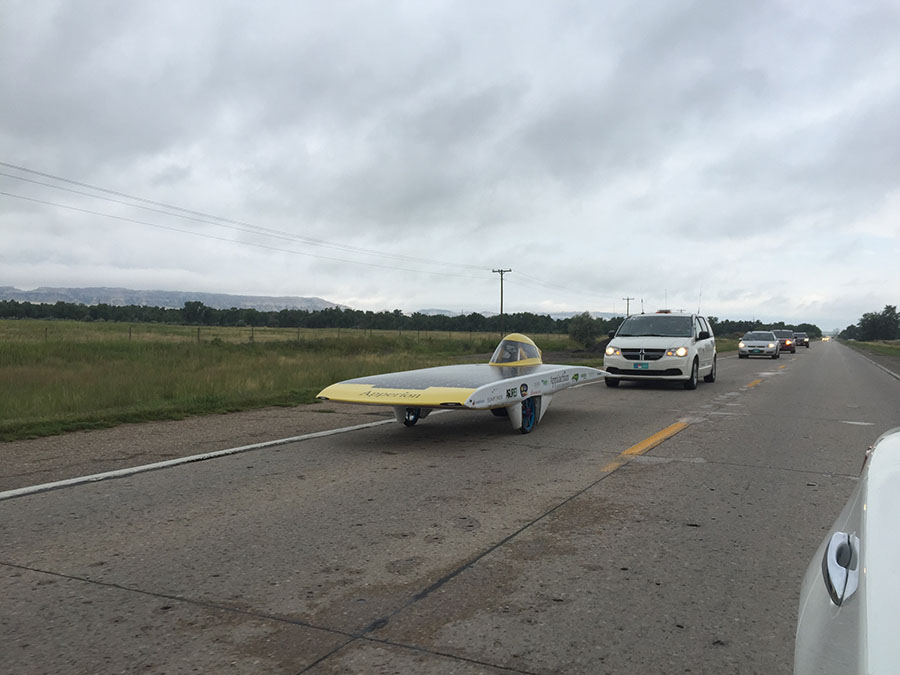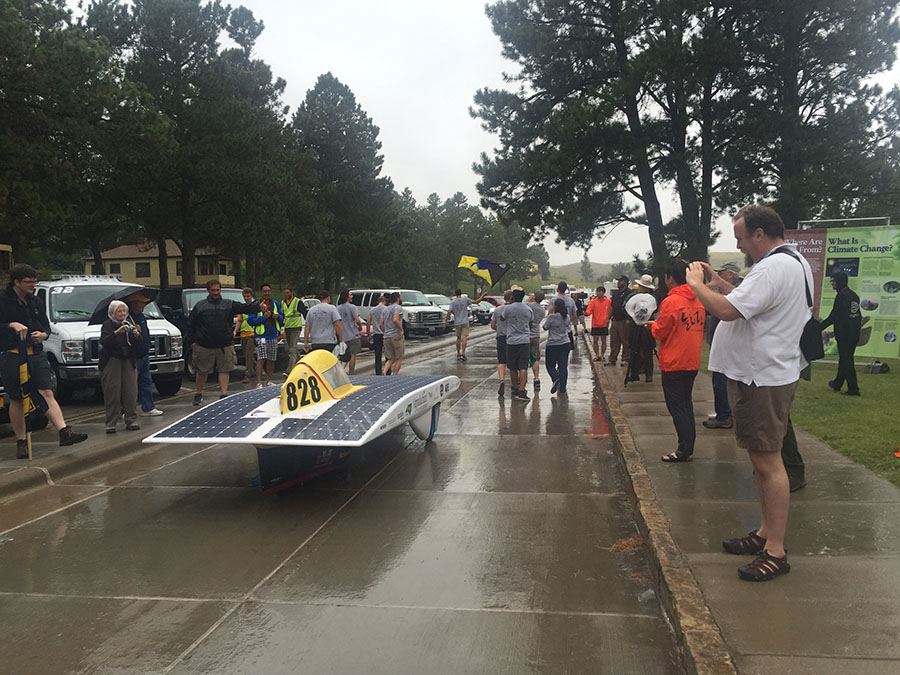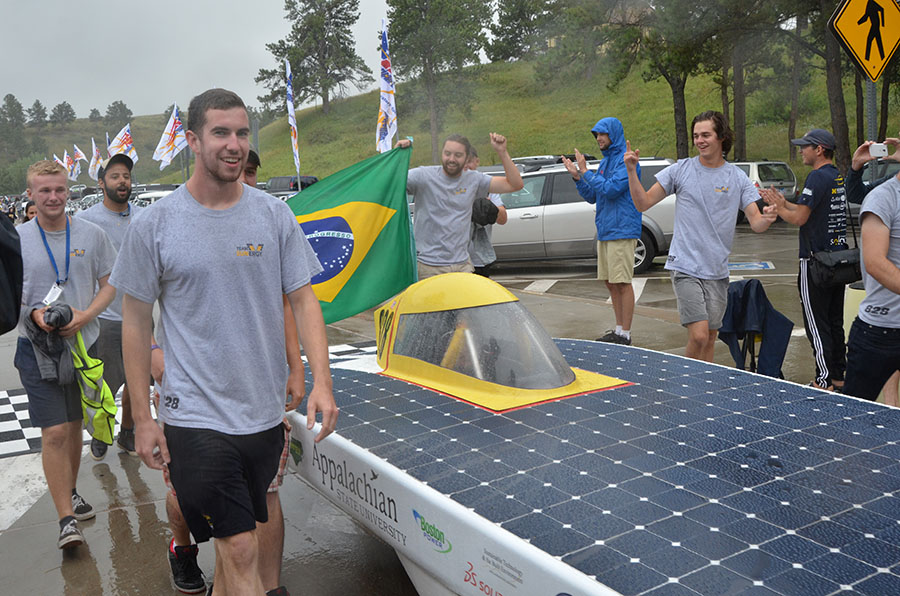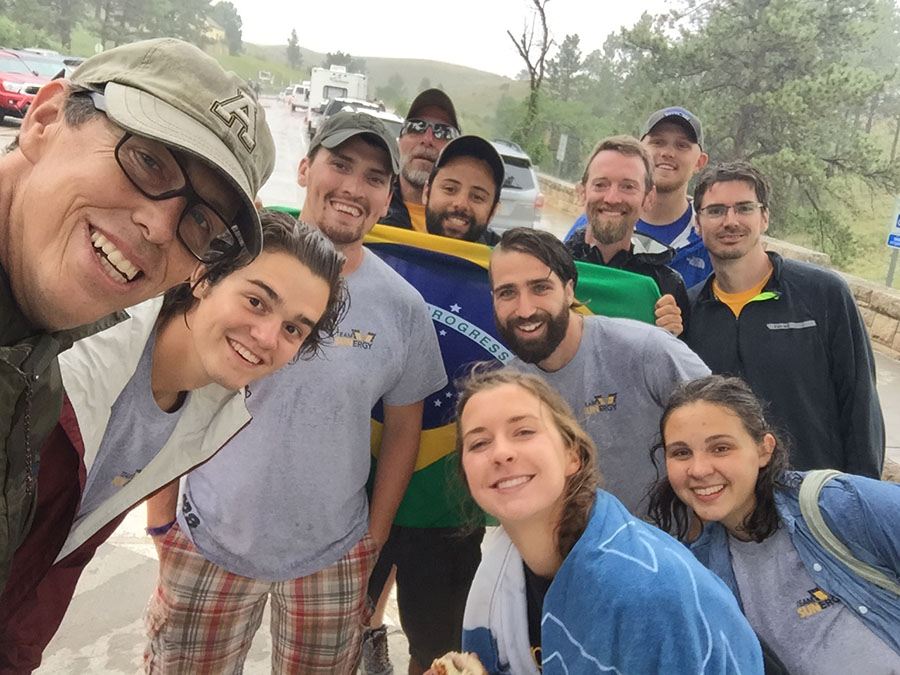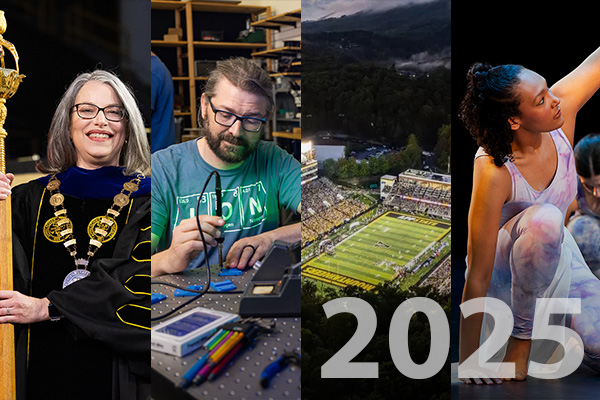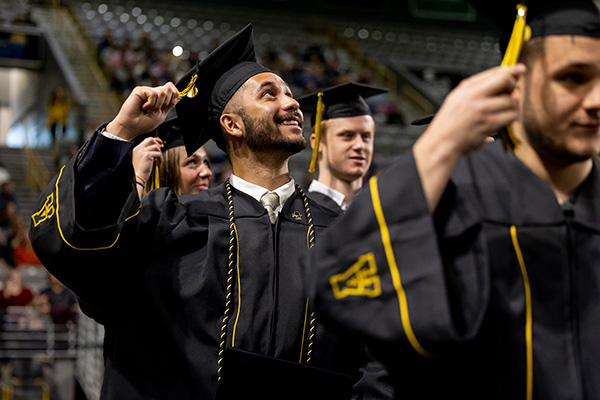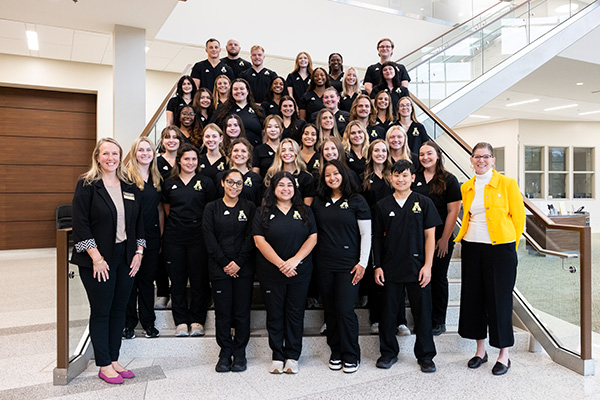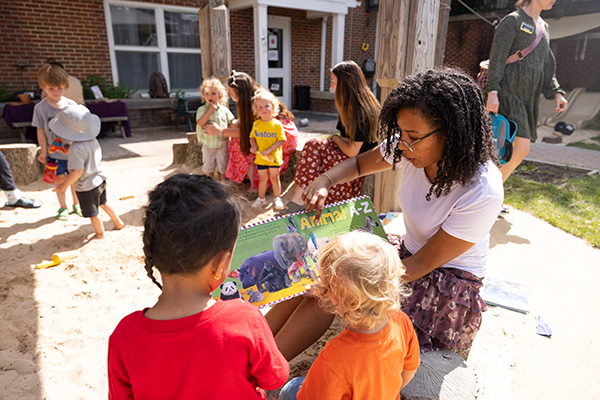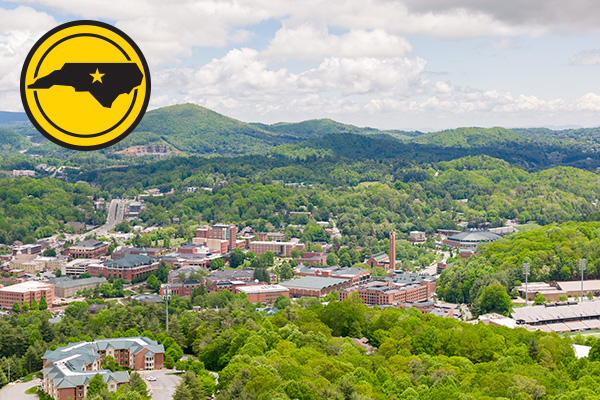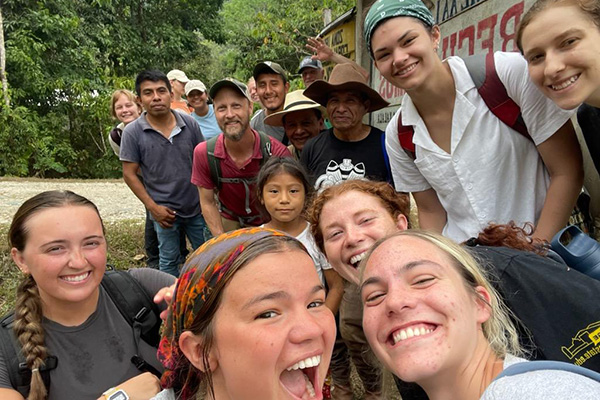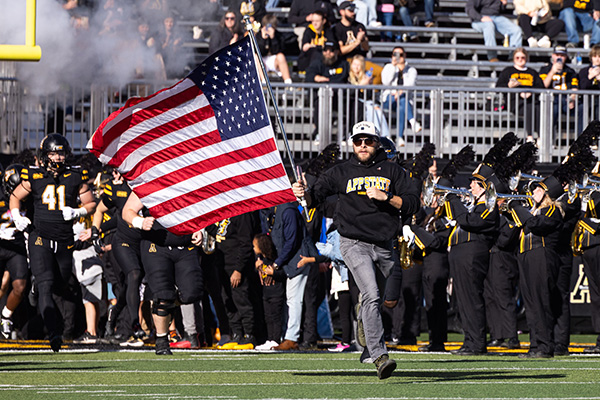What do you get when you take a dozen Appalachian State University students, three passionate faculty, and an institutional commitment to sustainability? As it turns out, you get a race car powered by the sun that wins third place in a three-day track race and places sixth in a cross-country race lasting eight days and nearly 2,000 miles. You get innovations in sustainable technology. You get a roadmap to the car of the future.
In a recent survey, 55 percent of Appalachian students indicated that the university’s commitment to sustainability influenced their decision to attend. And while each person’s definition of sustainability is a bit different – personal choices are often at the center of how people choose to define the concept – it is clear that the students on this team are committed to improving the quality of life for the next generation, and that means developing technology that will lessen the negative impact of humans on the environment.
Meet the hearts and minds that lead Team Sunergy and learn how Appalachian State University’s solar team found a place on the podium at the Formula Sun Grand Prix.
Why did we go? To build a better transportation solution. How did we place third? Sheer Mountaineer grit. Join the team, experience scrutineering, on-track qualifying and pit-stop drama. Watch the video here and think solar.
Students from a variety of majors – some you might expect, like sustainable technology and engineering physics, and some you might not, like interior design and music industry studies – came together to form Team Sunergy and change the future of transportation.
Advising them were three faculty mentors: Dr. Jeremy Ferrell, assistant professor of sustainable technology in the Department of Sustainable Technology and the Built Environment, and Chris Tolbert and Brad Johnson, both adjunct instructors, who coached the team on solar car development and electronics and automation, respectively.
Supporting them were countless faculty and staff, but chief among those was Dr. Lee Ball, interim director of the Office of Sustainability.
The idea behind Apperion
The brainchild of a student with a fascination with sustainable technology and a love for race cars, Apperion, the solar vehicle, took shape after a conversation Dan Blakeley, then an undergraduate student, started with Ferrell. Inspired by his experience converting a gas-powered golf cart into an electric vehicle in Chris Tolbert’s Sustainable Transportation course, Blakeley was keen to build a solar race car. He sought out Ferrell because of his research in biofuels and alternative transportation. True to the entrepreneurial spirit of Appalachian faculty, Ferrell told Blakeley he’d like to “jump in” on the project, and a vision for a solar car started to become a reality. Within a year, they had developed a race car prototype. Two years later, Blakeley, now a graduate student pursuing dual degrees in appropriate technology and engineering physics, led the first-ever North Carolina team into the American Solar Challenge (ASC), an international competition in which collegiate teams design, build and race solar vehicles.
After successfully qualifying for the ASC, Appalachian’s Team Sunergy secured a third place win in the track race phase of the ASC qualifier, the Formula Sun Grand Prix. They went on to place sixth in the ASC’s 1,975-mile, cross-country race that covered seven states and lasted eight days. One of 20 teams to qualify for entry into the competition, Team Sunergy became one of only 12 to complete the ASC and one of only three to drive across the finish line on its own power on the final day.
When asked why their accomplishments are significant, the team members echoed a common refrain: “We’re not an engineering school.” Presented neither as badge of honor nor a weakness, this response by every team member is a fact: of the 20 teams that entered the competition, only two are liberal arts institutions. Perhaps, Appalachian team members suggested, this gave them a competitive advantage because they approached building a solar car not from an engineering standpoint but as a sustainability solution.
A sustainability challenge, not an engineering project
“Our team not only sees this as a project and a challenge – they see this as part of the larger picture that has to do with integrating sustainability into building a solar race car,” said Ferrell. “This is what really distinguishes our students: they see the importance of making our transportation sector cleaner, and of using clean energy to power it.”
“For us, this is a sustainability challenge,” stated Duvey Rudow, the team’s assistant director and a senior physics major. “For engineering schools, they say, ‘How do we build a solar car?’ because it’s an engineering problem for them. For us, we say, ‘OK, how do we make a more efficient form of transportation?’”
Sustainability education is a relatively new field,” said Ball, “and Appalachian has been a part of it since before the S- word emerged in the lexicon. We have a deep understanding – and the ability to articulate – all the different ways people can connect to sustainability. Every discipline connects to it, and we get that at Appalachian.”
In interviews with team members and faculty, this narrative emerged: While Team Sunergy sweated the details from maximizing battery power to soldering wires to finding sponsors and acquiring insurance, right down to choosing the car number – 828 to represent the Boone area code – they learned the fundamentals of teamwork. They faced failures and false starts, overcame seemingly tremendous funding obstacles, shared late-night meals, bickered, laughed and cried together, and in the process became a team that trusted one another, learned to disagree with respect, and when to lead and when to follow.
These skills will serve them well in the future, Ball said. “When they go into the professional world, they will remember that it takes an interdisciplinary team and holistic approach to find a solution to a problem.”
Ferrell agrees. “Our students are learning how to put a project together, execute dozens of different tasks, be highly organized, manage money, clearly articulate what they are doing and develop leadership,” he said. “This kind of leadership will make them stand out when they go on to work at Tesla motors or SpaceX or become founders of their own entrepreneurial endeavor with clean energy or clean transportation, or whatever connection they find with sustainability.”
Envisioning the future: solar transportation
The team sees their accomplishments as a new start line. Next up, building a car that will move the technology closer to a vehicle consumers will drive on a daily basis.
“Hopefully, [future generations] will be driving solar cars and won’t have to think about problems like the emissions coming out of their cars every time they are driving,” said Andrew Grimes, the team’s interim business director and a senior finance and banking major. “For them, the solution will already be here.”
As Team Sunergy departed campus for the ASC competition, Chancellor Sheri N. Everts captured the significance of their enthusiasm for making the world a better place. The team’s work, she said, “represents the bold, confident and pioneering attitude that so perfectly represents our campus and its vision to build a brighter future.”
Team Sunergy’s passion for – and understanding of – sustainability led them down a road that began with a conversation, took them on a 2,000-mile journey and ultimately will lead to the car of the future.
About App State’s Team Sunergy
Appalachian State University’s internationally recognized Team Sunergy is an interdisciplinary, student-led team with a passion for sustainable transportation — and the ingenuity, innovation and drive to create it. The team began in fall 2013, as a class project to build a solar-powered golf cart, and has evolved into an award-winning program that has achieved podium finishes in every year of competition in both the Formula Sun Grand Prix and American Solar Challenge (ASC), including a first-place finish in the 2021 ASC. Both races set the standards for and test the limits of solar vehicle technology. Team Sunergy’s first vehicle, Apperion, was a modified single-occupant race car. In 2018, the team designed and built its current, two-passenger, Cruiser Class car, ROSE (Racing on Solar Energy), from the ground up. Learn more at https://sunergy.appstate.edu.
About Appalachian State University
As a premier public institution, Appalachian State University prepares students to lead purposeful lives. App State is one of 17 campuses in the University of North Carolina System, with a national reputation for innovative teaching and opening access to a high-quality, cost-effective education. The university enrolls more than 21,000 students, has a low student-to-faculty ratio and offers more than 150 undergraduate and 80 graduate majors at its Boone and Hickory campuses and through App State Online. Learn more at https://www.appstate.edu.
Acknowledgements
Web work by Pete Montaldi and Derek Wycoff. Video production by Garrett Ford. Photography by Marie Freeman, with additional images by Bailey Winecoff and Dr. Lee Ball. Audio production by Dave Blanks. Writing by Megan Hayes and Elisabeth Wall. Art by Jim Fleri. Editing by Linda Coutant. Logistics management by Stephanie Naoum. Technical support by Wes Craig. Creative direction and executive production by Troy Tuttle.
Special thanks to Dr. Lee Ball and Dr. Jeremy Ferrell for the context, history and on-site updates.
Shoutout to the Principia College and Iowa State University for the support, mentorship and parts you generously provided to Team Sunergy.
Very special thanks to Andrew Grimes, and every member of Team Sunergy. You are an inspiration.
What do you think?
Share your feedback on this story.
